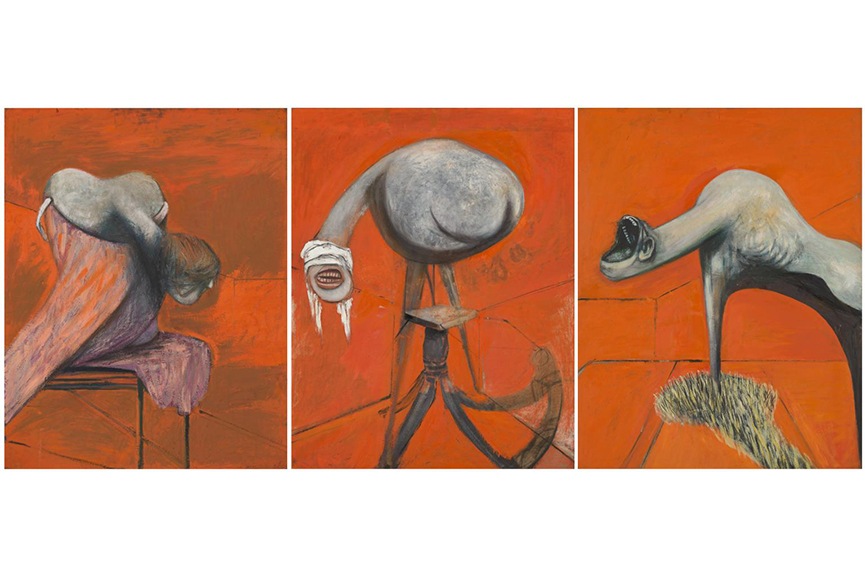

He continued to incorporate the spatial device he was to use many times throughout his career-three lines radiating from this central figure, which was first seen in Crucifixion, 1933. When he returned to the topic of the Crucifixion eleven years later, he retained some of the stylistic elements he had developed earlier, such as the elongated and dislocated organic forms that he now based on The Oresteia. He abandoned the Crucifixion theme, then largely withdrew from painting in frustration, instead immersing himself in love affairs, drinking and gambling. He was often harshly self-critical during this period, and would abandon or destroy canvasses before they were completed. The art critic Wieland Schmied noted that while the early works are "aesthetically pleasing", they lack "a sense of urgency or inner necessity they are beautiful, but lifeless." The sentiment is echoed by Hugh Davies, who wrote that Bacon's 1933 paintings "suggest an artist concentrating more on formal than on expressive concerns." Bacon admitted that his early works were not successful they were merely decorative and lacking in substance. These abstract figurations contain formal elements typical of their time, including diaphanous forms, flat backgrounds, and surrealist props such as flowers and umbrellas.
THREE STUDIES FOR FIGURES AT THE BASE OF A CRUCIFIXION SERIES
He began to paint images based on the Crucifixion in 1933, when his then-patron Eric Hall commissioned a series of three paintings based on the subject. He later admitted that his career was delayed because he had spent so long looking for a subject that would sustain his interest. He painted sporadically and without commitment during the late 1920s and early 1930s, when he worked as an interior decorator and designer of furniture and rugs.

Together with those of Freud, Bacon’s paintings are some of the world’s most valuable and important works of modern art.As an artist, Francis Bacon was a late starter. As his career matured, distorted biomorphism mellowed into a more overt figuration, beautifully exampled in his late 60s masterpiece, Three Studies of Lucian Freud (1969), and Study for Self-Portrait - Triptych (1985-86). With the art world dominated by abstraction, Bacon’s work was not only emphatically figurative but drew on traditions of figuration, from Renaissance crucifixions, seen in Three Studies for a Crucifixion (1962), to the works of Baroque Masters exampled in his endless reworkings of Velázquez’s Portrait of Innocent X (c.1650). While his early works had been inspired by Cubism and Picasso’s later works of biomorphic distortion, Three Figures saw the development of a unique figurative style.īy the 1950s, Bacon had become one of the most controversial painters in Britain and, together with Freud and Frank Auerbach, a leading luminary of the Soho avant garde. It was his 1944 triptych Three Studies for Figures at the Base of a Crucifixion that brought him to wider attention. He received little critical or commercial success, however, and after a disappointing 1934 solo show his output dwindled. Bacon had begun drawing and painting in Berlin, but it was only in 1931 that he began devoting himself to his art. He left home aged 17 for Berlin and then London, where he worked as interior decorator and designer of furniture and rugs. ‘Greedy for food, for drink, for being with the people one likes, for the excitement of things happening.’ Together with his contemporary, Lucian Freud, Bacon is widely considered the most important British painter of the modern age - a self-taught 20th-century master who lived his life in Bohemian excess, and whose work reinvigorated the figurative tradition through a unique exploration of the human figure in all its grotesquery and isolation.īorn in Dublin, the son of an English racehorse trainer, Bacon had no formal education. ‘I’m greedy for life and I’m greedy as an artist,’ said Irish-born British painter Francis Bacon.


 0 kommentar(er)
0 kommentar(er)
